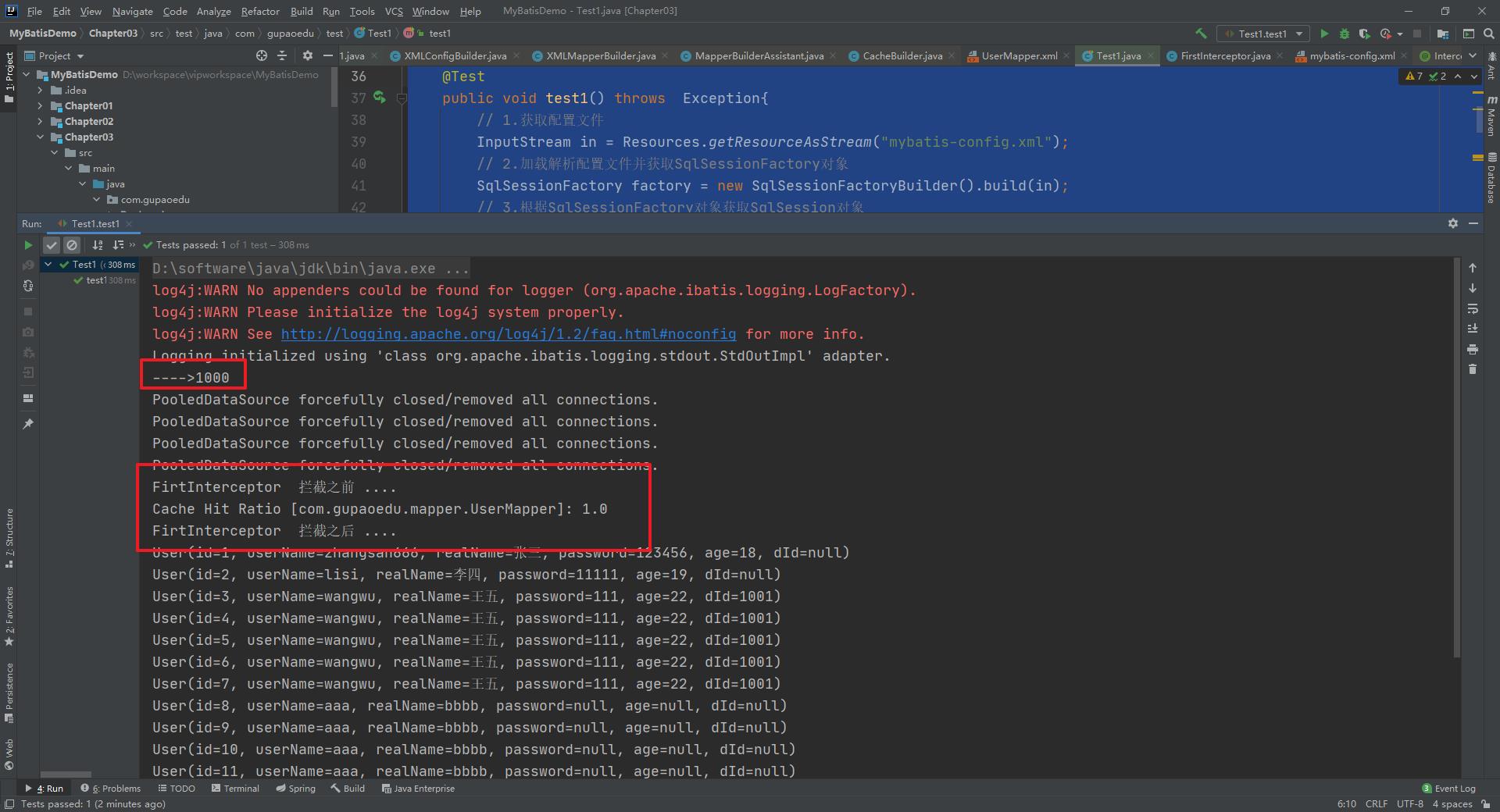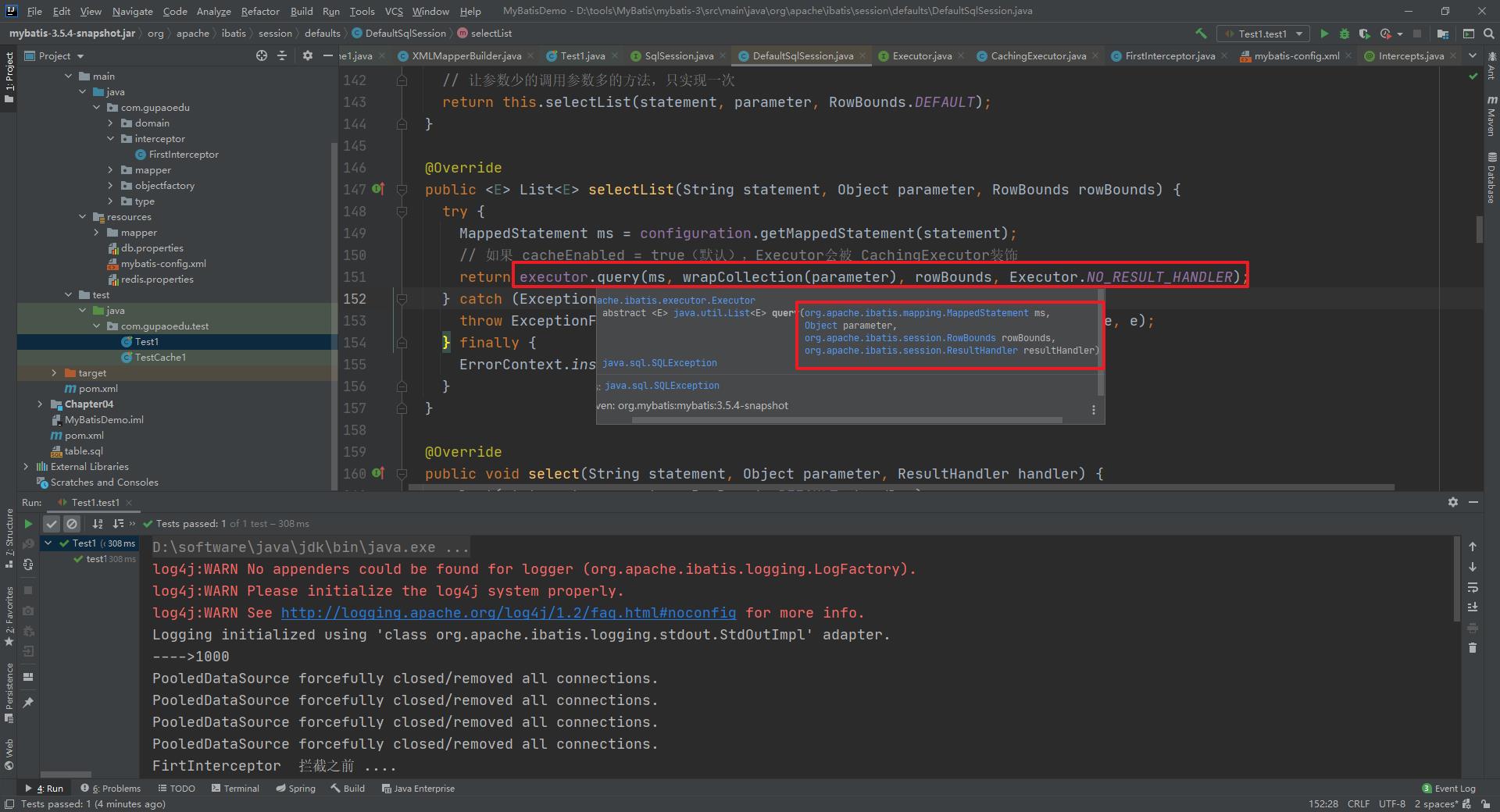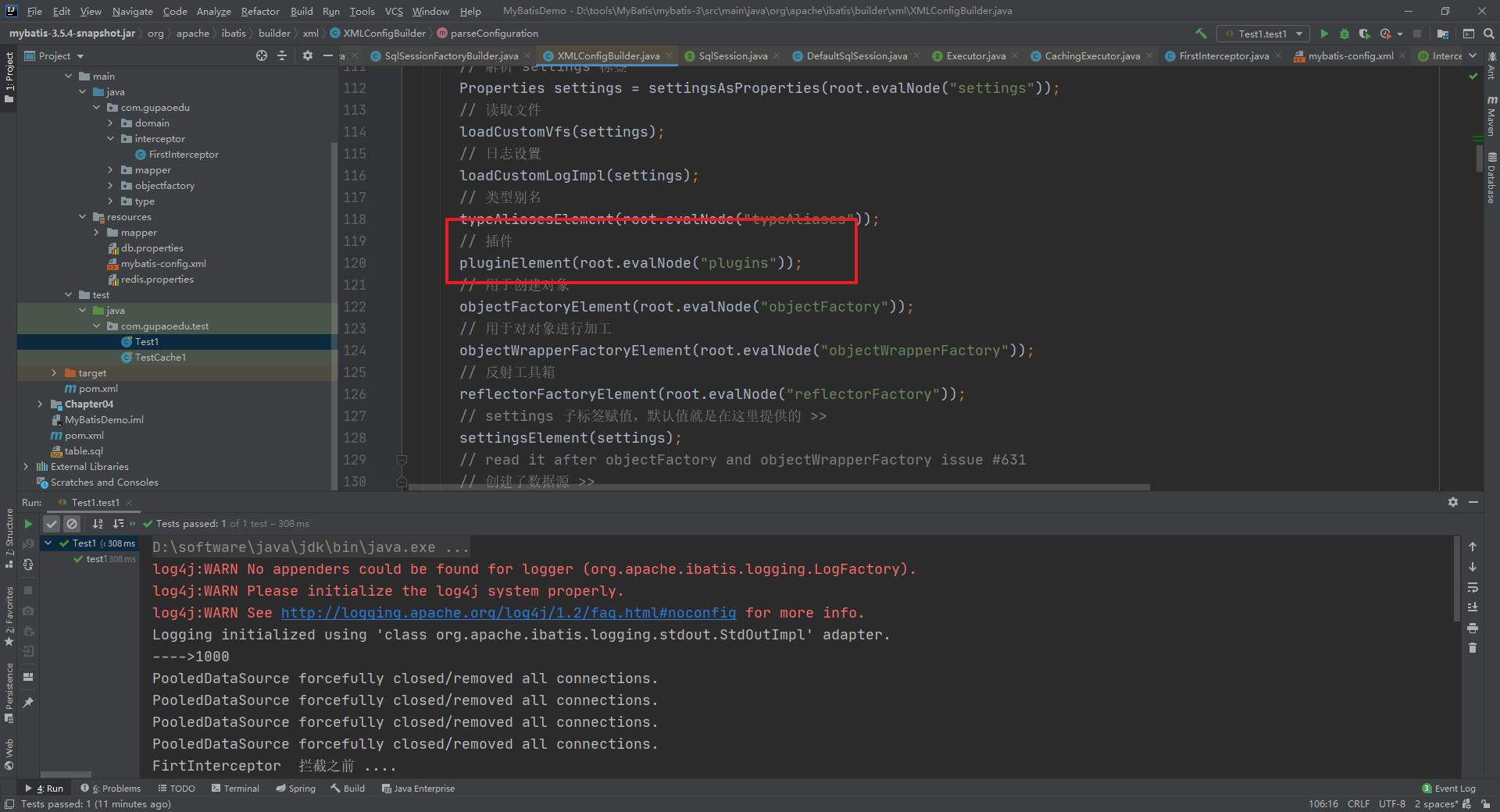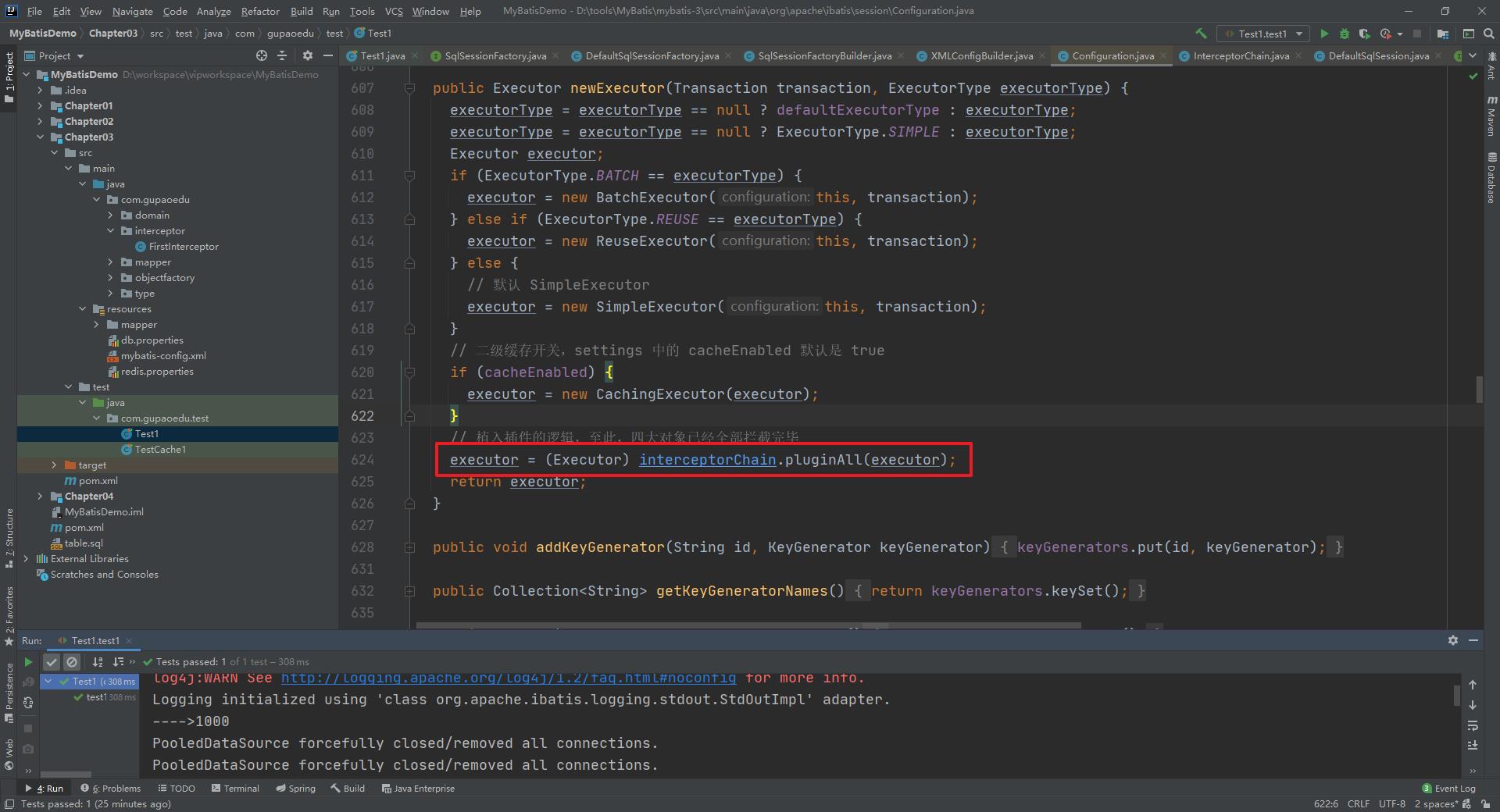其实MyBatis的插件机制可以帮我们解决工作的很多问题,建议收藏!
Posted 波波烤鸭
tags:
篇首语:本文由小常识网(cha138.com)小编为大家整理,主要介绍了其实MyBatis的插件机制可以帮我们解决工作的很多问题,建议收藏!相关的知识,希望对你有一定的参考价值。
在实际的工作对于MyBatis的使用我们更多的还是停留在应用层,如果你对于MyBatis的底层,尤其是插件这块掌握的比较好的,可以帮助我们解决很多工作中比较棘手的问题,本篇文章就给大伙详细的来介绍下MyBatis的插件机制。对于MyBatis的底层原理还有不清楚的可以看看我的MyBatis底层专题哦。
MyBatis源码分析之三层结构介绍
MyBatis源码分析之核心流程介绍(上)
MyBatis源码分析之核心流程介绍(下)
带你彻底搞懂MyBatis的底层实现之反射工具箱(reflector)
带你彻底搞懂MyBatis的底层实现之类型转换模块
带你彻底搞懂MyBatis的底层实现之日志模块(Log)
带你彻底搞懂MyBatis的底层实现之缓存模块(Cache)-吊打面试官必备技能
MyBatis插件
插件是一种常见的扩展方式,大多数开源框架也都支持用户通过添加自定义插件的方式来扩展或者改变原有的功能,MyBatis中也提供的有插件,虽然叫插件,但是实际上是通过拦截器(Interceptor)实现的,在MyBatis的插件模块中涉及到责任链模式和JDK动态代理,这两种设计模式的技术知识也是大家要提前掌握的。
1. 自定义插件
首先我们来看下一个自定义的插件我们要如何来实现。
1.1 创建Interceptor实现类
我们创建的拦截器必须要实现Interceptor接口,Interceptor接口的定义为
public interface Interceptor {
// 执行拦截逻辑的方法
Object intercept(Invocation invocation) throws Throwable;
// 决定是否触发 intercept()方法
default Object plugin(Object target) {
return Plugin.wrap(target, this);
}
// 根据配置 初始化 Intercept 对象
default void setProperties(Properties properties) {
// NOP
}
}
在MyBatis中Interceptor允许拦截的内容是
- Executor (update, query, flushStatements, commit, rollback, getTransaction, close, isClosed)
- ParameterHandler (getParameterObject, setParameters)
- ResultSetHandler (handleResultSets, handleOutputParameters)
- StatementHandler (prepare, parameterize, batch, update, query)
我们创建一个拦截Executor中的query和close的方法
package com.gupaoedu.interceptor;
import org.apache.ibatis.executor.Executor;
import org.apache.ibatis.mapping.MappedStatement;
import org.apache.ibatis.plugin.*;
import org.apache.ibatis.session.ResultHandler;
import org.apache.ibatis.session.RowBounds;
import java.util.Properties;
/**
* 自定义的拦截器
* @Signature 注解就可以表示一个方法签名, 唯一确定一个方法
*/
@Intercepts({
@Signature(
type = Executor.class // 需要拦截的类型
,method = "query" // 需要拦截的方法
// args 中指定 被拦截方法的 参数列表
,args={MappedStatement.class,Object.class, RowBounds.class, ResultHandler.class}
),
@Signature(
type = Executor.class
,method = "close"
,args = {boolean.class}
)
})
public class FirstInterceptor implements Interceptor {
private int testProp;
/**
* 执行拦截逻辑的方法
* @param invocation
* @return
* @throws Throwable
*/
@Override
public Object intercept(Invocation invocation) throws Throwable {
System.out.println("FirtInterceptor 拦截之前 ....");
Object obj = invocation.proceed();
System.out.println("FirtInterceptor 拦截之后 ....");
return obj;
}
/**
* 决定是否触发 intercept方法
* @param target
* @return
*/
@Override
public Object plugin(Object target) {
return Plugin.wrap(target,this);
}
@Override
public void setProperties(Properties properties) {
System.out.println("---->"+properties.get("testProp"));
}
public int getTestProp() {
return testProp;
}
public void setTestProp(int testProp) {
this.testProp = testProp;
}
}
1.2 配置拦截器
创建好自定义的拦截器后,我们需要在全局配置文件中添加自定义插件的注册
<plugins>
<plugin interceptor="com.gupaoedu.interceptor.FirstInterceptor">
<property name="testProp" value="1000"/>
</plugin>
</plugins>
1.3 运行程序
然后我们执行对应的查询操作。
@Test
public void test1() throws Exception{
// 1.获取配置文件
InputStream in = Resources.getResourceAsStream("mybatis-config.xml");
// 2.加载解析配置文件并获取SqlSessionFactory对象
SqlSessionFactory factory = new SqlSessionFactoryBuilder().build(in);
// 3.根据SqlSessionFactory对象获取SqlSession对象
SqlSession sqlSession = factory.openSession();
// 4.通过SqlSession中提供的 API方法来操作数据库
List<User> list = sqlSession.selectList("com.gupaoedu.mapper.UserMapper.selectUserList");
for (User user : list) {
System.out.println(user);
}
// 5.关闭会话
sqlSession.close();
}
在输出语句中可以看到我们的日志信息

拦截的query方法和close方法的源码位置在如下:


2. 插件实现原理
自定义插件的步骤还是比较简单的,接下来我们分析下插件的实现原理是怎么回事。
2.1 初始化操作
首先我们来看下在全局配置文件加载解析的时候做了什么操作。

进入方法内部可以看到具体的解析操作
private void pluginElement(XNode parent) throws Exception {
if (parent != null) {
for (XNode child : parent.getChildren()) {
// 获取<plugin> 节点的 interceptor 属性的值
String interceptor = child.getStringAttribute("interceptor");
// 获取<plugin> 下的所有的properties子节点
Properties properties = child.getChildrenAsProperties();
// 获取 Interceptor 对象
Interceptor interceptorInstance = (Interceptor) resolveClass(interceptor).getDeclaredConstructor().newInstance();
// 设置 interceptor的 属性
interceptorInstance.setProperties(properties);
// Configuration中记录 Interceptor
configuration.addInterceptor(interceptorInstance);
}
}
}
该方法用来解析全局配置文件中的plugins标签,然后对应的创建Interceptor对象,并且封装对应的属性信息。最后调用了Configuration对象中的方法。 configuration.addInterceptor(interceptorInstance)
public void addInterceptor(Interceptor interceptor) {
interceptorChain.addInterceptor(interceptor);
}
通过这个代码我们发现我们自定义的拦截器最终是保存在了InterceptorChain这个对象中。而InterceptorChain的定义为
public class InterceptorChain {
// 保存所有的 Interceptor 也就我所有的插件是保存在 Interceptors 这个List集合中的
private final List<Interceptor> interceptors = new ArrayList<>();
//
public Object pluginAll(Object target) {
for (Interceptor interceptor : interceptors) { // 获取拦截器链中的所有拦截器
target = interceptor.plugin(target); // 创建对应的拦截器的代理对象
}
return target;
}
public void addInterceptor(Interceptor interceptor) {
interceptors.add(interceptor);
}
public List<Interceptor> getInterceptors() {
return Collections.unmodifiableList(interceptors);
}
}
2.2 如何创建代理对象
在解析的时候创建了对应的Interceptor对象,并保存在了InterceptorChain中,那么这个拦截器是如何和对应的目标对象进行关联的呢?首先拦截器可以拦截的对象是 Executor,ParameterHandler,ResultSetHandler,StatementHandler.那么我们来看下这四个对象在创建的时候又什么要注意的
2.2.1 Executor

我们可以看到Executor在装饰完二级缓存后会通过pluginAll来创建Executor的代理对象。
public Object pluginAll(Object target) {
for (Interceptor interceptor : interceptors) { // 获取拦截器链中的所有拦截器
target = interceptor.plugin(target); // 创建对应的拦截器的代理对象
}
return target;
}
进入plugin方法中,我们会进入到
// 决定是否触发 intercept()方法
default Object plugin(Object target) {
return Plugin.wrap(target, this);
}
然后进入到MyBatis给我们提供的Plugin工具类的实现 wrap方法中。
/**
* 创建目标对象的代理对象
* 目标对象 Executor ParameterHandler ResultSetHandler StatementHandler
* @param target 目标对象
* @param interceptor 拦截器
* @return
*/
public static Object wrap(Object target, Interceptor interceptor) {
// 获取用户自定义 Interceptor中@Signature注解的信息
// getSignatureMap 负责处理@Signature 注解
Map<Class<?>, Set<Method>> signatureMap = getSignatureMap(interceptor);
// 获取目标类型
Class<?> type = target.getClass();
// 获取目标类型 实现的所有的接口
Class<?>[] interfaces = getAllInterfaces(type, signatureMap);
// 如果目标类型有实现的接口 就创建代理对象
if (interfaces.length > 0) {
return Proxy.newProxyInstance(
type.getClassLoader(),
interfaces,
new Plugin(target, interceptor, signatureMap));
}
// 否则原封不动的返回目标对象
return target;
}
Plugin中的各个方法的作用
public class Plugin implements InvocationHandler {
private final Object target; // 目标对象
private final Interceptor interceptor; // 拦截器
private final Map<Class<?>, Set<Method>> signatureMap; // 记录 @Signature 注解的信息
private Plugin(Object target, Interceptor interceptor, Map<Class<?>, Set<Method>> signatureMap) {
this.target = target;
this.interceptor = interceptor;
this.signatureMap = signatureMap;
}
/**
* 创建目标对象的代理对象
* 目标对象 Executor ParameterHandler ResultSetHandler StatementHandler
* @param target 目标对象
* @param interceptor 拦截器
* @return
*/
public static Object wrap(Object target, Interceptor interceptor) {
// 获取用户自定义 Interceptor中@Signature注解的信息
// getSignatureMap 负责处理@Signature 注解
Map<Class<?>, Set<Method>> signatureMap = getSignatureMap(interceptor);
// 获取目标类型
Class<?> type = target.getClass();
// 获取目标类型 实现的所有的接口
Class<?>[] interfaces = getAllInterfaces(type, signatureMap);
// 如果目标类型有实现的接口 就创建代理对象
if (interfaces.length > 0) {
return Proxy.newProxyInstance(
type.getClassLoader(),
interfaces,
new Plugin(target, interceptor, signatureMap));
}
// 否则原封不动的返回目标对象
return target;
}
/**
* 代理对象方法被调用时执行的代码
* @param proxy
* @param method
* @param args
* @return
* @throws Throwable
*/
@Override
public Object invoke(Object proxy, Method method, Object[] args) throws Throwable {
try {
// 获取当前方法所在类或接口中,可被当前Interceptor拦截的方法
Set<Method> methods = signatureMap.get(method.getDeclaringClass());
if (methods != null && methods.contains(method)) {
// 当前调用的方法需要被拦截 执行拦截操作
return interceptor.intercept(new Invocation(target, method, args));
}
// 不需要拦截 则调用 目标对象中的方法
return method.invoke(target, args);
} catch (Exception e) {
throw ExceptionUtil.unwrapThrowable(e);
}
}
private static Map<Class<?>, Set<Method>> getSignatureMap(Interceptor interceptor) {
Intercepts interceptsAnnotation = interceptor.getClass().getAnnotation(Intercepts.class);
// issue #251
if (interceptsAnnotation == null) {
throw new PluginException("No @Intercepts annotation was found in interceptor " + interceptor.getClass().getName());
}
Signature[] sigs = interceptsAnnotation.value();
Map<Class<?>, Set<Method>> signatureMap = new HashMap<>();
for (Signature sig : sigs) {
Set<Method> methods = signatureMap.computeIfAbsent(sig.type(), k -> new HashSet<>());
try {
Method method = sig.type().getMethod(sig.method(), sig.args());
methods.add(method);
} catch (NoSuchMethodException e) {
throw new PluginException("Could not find method on " + sig.type() + " named " + sig.method() + ". Cause: " + e, e);
}
}
return signatureMap;
}
private static Class<?>[] getAllInterfaces(Class<?> type, Map<Class<?>, Set<Method>> signatureMap) {
Set<Class<?>> interfaces = new HashSet<>();
while (type != null) {
for (Class<?> c : type.getInterfaces()) {
if (signatureMap.containsKey(c)) {
interfaces.add(c);
}
}
type = type.getSuperclass();
}
return interfaces.toArray(new Class<?>[interfaces.size()]);
}
}
2.2.2 StatementHandler
在获取StatementHandler的方法中
@Override
public <E> List<E> doQuery(MappedStatement ms, Object parameter, RowBounds rowBounds, ResultHandler resultHandler, BoundSql boundSql) throws SQLException {
Statement stmt = null;
try {
Configuration configuration = ms.getConfiguration();
// 注意,已经来到SQL处理的关键对象 StatementHandler >>
StatementHandler handler = configuration.newStatementHandler(wrapper, ms, parameter, rowBounds, resultHandler, boundSql);
// 获取一个 Statement对象
stmt 以上是关于其实MyBatis的插件机制可以帮我们解决工作的很多问题,建议收藏!的主要内容,如果未能解决你的问题,请参考以下文章